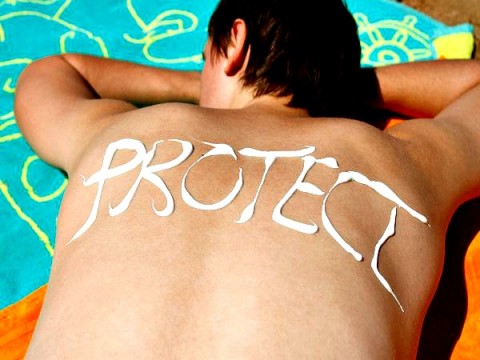In collaboration with dermatologist Dr. Poly Komitsopoulou
PREVENTION TIPS
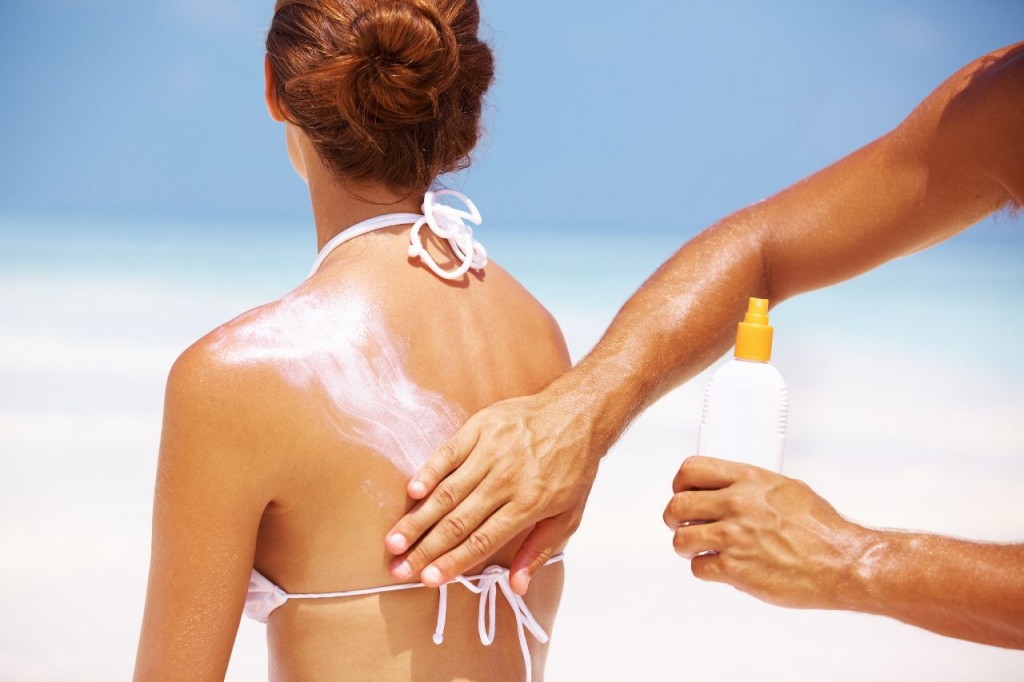 The simplest way to protect your body from a sunburn is to minimize your exposure during midday, when the radiation is heavier, and seek for shady places. As the ancient Greek Cleobulus of Lindos, one of the seven wise men of antiquity, used to say "Metron ariston" which means that we should do everything in moderation. Something you must always combine your walk with is the use of high Sun Protection Factor (SPF) sunscreens, which you can find in many Greek super markets, seaside mini markets or local pharmacies. A sunscreen with 50 SPF would be ideal. Sunscreen must be applied to all the uncovered parts of your body 30 to 60 minutes before your exposure. And when we say all, we mean it. You shouldn't neglect sensitive areas like your ears, your shoulders or even the dorsum of you feet. Sunscreen should be reapplied 30 minutes after exposure begins and later at regular intervals. It should also be refreshed after activities that might remove it, such as swimming or rubbing. Other common ways to protect your body is to wear protective clothing and a wide-brim hat. In case you are at the beach, prefer to stand under an umbrella.
The simplest way to protect your body from a sunburn is to minimize your exposure during midday, when the radiation is heavier, and seek for shady places. As the ancient Greek Cleobulus of Lindos, one of the seven wise men of antiquity, used to say "Metron ariston" which means that we should do everything in moderation. Something you must always combine your walk with is the use of high Sun Protection Factor (SPF) sunscreens, which you can find in many Greek super markets, seaside mini markets or local pharmacies. A sunscreen with 50 SPF would be ideal. Sunscreen must be applied to all the uncovered parts of your body 30 to 60 minutes before your exposure. And when we say all, we mean it. You shouldn't neglect sensitive areas like your ears, your shoulders or even the dorsum of you feet. Sunscreen should be reapplied 30 minutes after exposure begins and later at regular intervals. It should also be refreshed after activities that might remove it, such as swimming or rubbing. Other common ways to protect your body is to wear protective clothing and a wide-brim hat. In case you are at the beach, prefer to stand under an umbrella.
SYMPTOMS
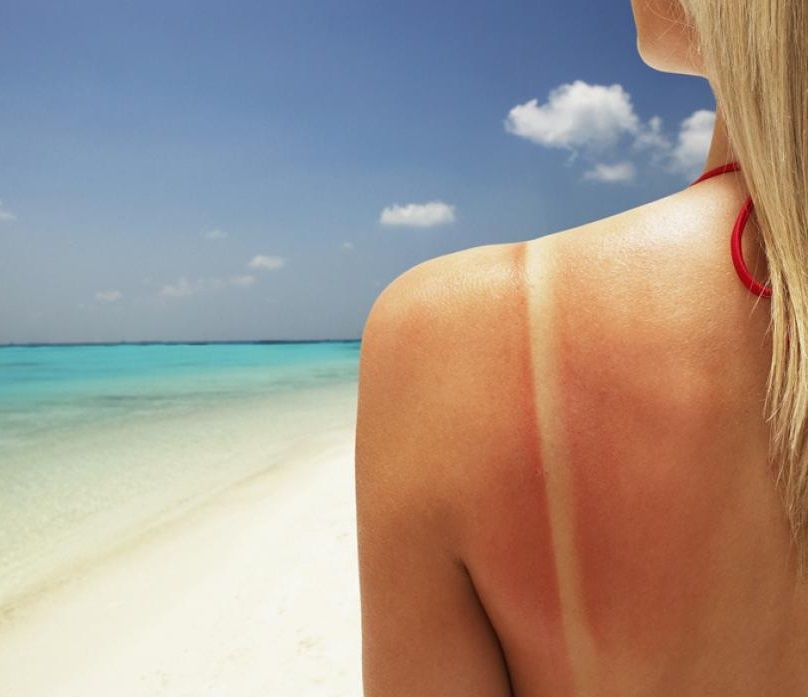 It takes less than 15 minutes for a sunburn to occur, whether you are on the beach or [sunburns symptoms small] on the mountains. The symptoms are not immediately obvious. In cases of minor sunburns, the skin displays an irritation and a slight redness, implying it's time for you to move immediately to the shade. In cases of severe sunburns the slight redness comes with a pain, respective to both the duration and intensity of exposure, and sometimes skin peeling after several days.
It takes less than 15 minutes for a sunburn to occur, whether you are on the beach or [sunburns symptoms small] on the mountains. The symptoms are not immediately obvious. In cases of minor sunburns, the skin displays an irritation and a slight redness, implying it's time for you to move immediately to the shade. In cases of severe sunburns the slight redness comes with a pain, respective to both the duration and intensity of exposure, and sometimes skin peeling after several days.
FIRST AID FOR A SUNBURN
In case a sunburn shows up, you should first of all avoid any further sun exposure, as it will make things worse, and take all the aforementioned precautions. Subsequently, you can take some steps to heal yourself before or without going to a medical center, depending on the size of the situation. Applying cool or wet clothes and towels on your skin until you reach your hotel will certainly make you feel better, as you have a warm feeling to the affected area caused by the concentration of blood during the healing process. It will also keep your skin hydrated and moist.
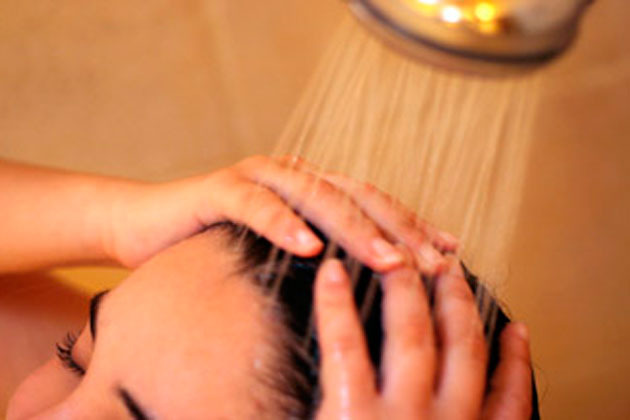 It would be great for your body to take two or three showers every 15 minutes after the sunburn. Doing so will limit the penetration of the burn and make you feel relieved. Clean and cool the sunburned area with tepid (not cold) water but avoid soaking your sunburn in soapy water, as soap can dry out your already dried skin and cause further irritation. Also, avoid any bath salts and oils, as they could cause further sensitivity reactions. When you are done, pat yourself gently without rubbing.
It would be great for your body to take two or three showers every 15 minutes after the sunburn. Doing so will limit the penetration of the burn and make you feel relieved. Clean and cool the sunburned area with tepid (not cold) water but avoid soaking your sunburn in soapy water, as soap can dry out your already dried skin and cause further irritation. Also, avoid any bath salts and oils, as they could cause further sensitivity reactions. When you are done, pat yourself gently without rubbing.
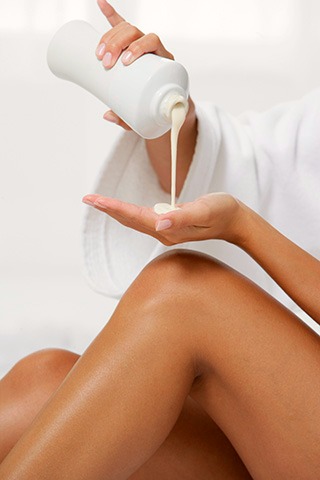 The important thing is to keep your skin cool, moisturized and protected against germs and bacteria. So don't forget to apply a light aftersun lotion or a light moisturizer without additional fragrances, which you can find in a pharmacy shop. There you can also find an aloe vera gel, that is wonderful for cooling the sunburns and sucking the redness right out of the area. Moisturizers with aloe vera would be great as well. Wearing loose clothes afterwards will minimize the pain and allow your skin to breathe and heal.
The important thing is to keep your skin cool, moisturized and protected against germs and bacteria. So don't forget to apply a light aftersun lotion or a light moisturizer without additional fragrances, which you can find in a pharmacy shop. There you can also find an aloe vera gel, that is wonderful for cooling the sunburns and sucking the redness right out of the area. Moisturizers with aloe vera would be great as well. Wearing loose clothes afterwards will minimize the pain and allow your skin to breathe and heal.
TREATMENTS
There are many treatments for the sunburn. To begin with, painkillers can reduce the pain and inflammation especially if you take them on time.
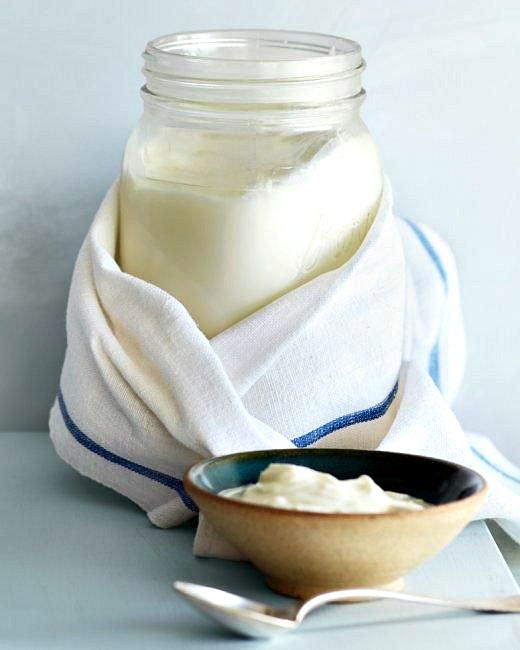 But for those of you that feel creative and would like to try an alternative way, the simplest and fastest Greek tradition for curing a sunburn is applying yogurt to the sunburned area. It would be ideal to use plain unsweetened full-fat yogurt that contains few additives and an abundance of probiotics and enzymes that help you heal your skin and restore its natural barrier. Apply it on your skin with your hands or a spoon and let it sit there for 5 to 10 minutes. Remove it as soon as it warms up or dries on your skin. Repeat 3 times. Then gently rinse it off with tepid water.
But for those of you that feel creative and would like to try an alternative way, the simplest and fastest Greek tradition for curing a sunburn is applying yogurt to the sunburned area. It would be ideal to use plain unsweetened full-fat yogurt that contains few additives and an abundance of probiotics and enzymes that help you heal your skin and restore its natural barrier. Apply it on your skin with your hands or a spoon and let it sit there for 5 to 10 minutes. Remove it as soon as it warms up or dries on your skin. Repeat 3 times. Then gently rinse it off with tepid water.
In case you want to experiment more, you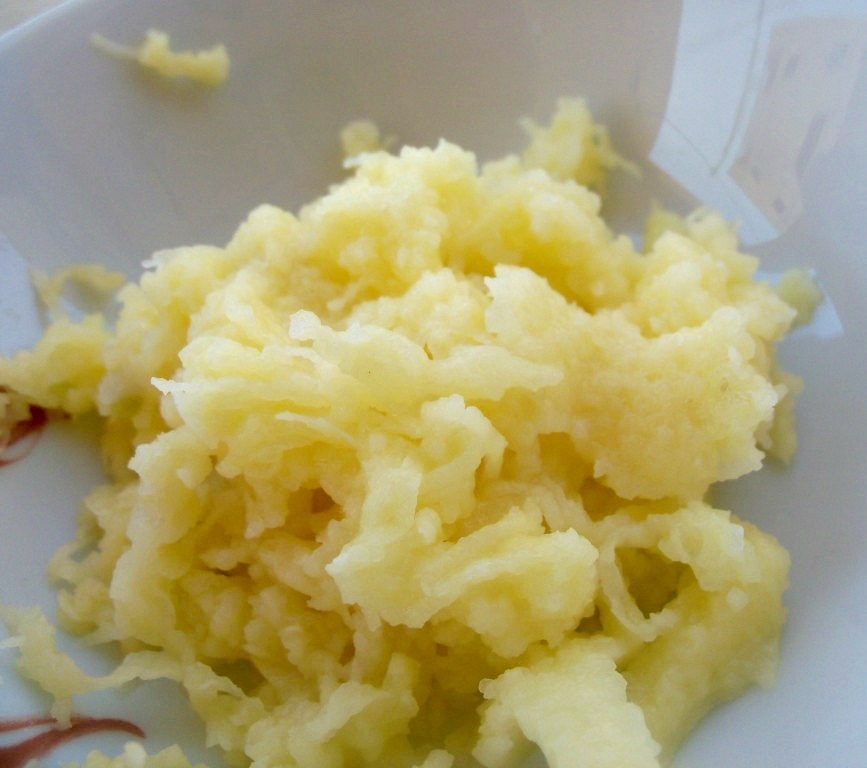 can relieve the pain and irritation of the skin using the therapeutic benefits of potatoes. Peel a potato, and then grate it with a potato grater. Put the pulp as a poultice on sore spots. The starch contained in a potato (20% approximately) will soothe inflamed tissues, while acting as a softener and analgesic by reducing the "pull" and the pain of the skin.
can relieve the pain and irritation of the skin using the therapeutic benefits of potatoes. Peel a potato, and then grate it with a potato grater. Put the pulp as a poultice on sore spots. The starch contained in a potato (20% approximately) will soothe inflamed tissues, while acting as a softener and analgesic by reducing the "pull" and the pain of the skin.
If the problem remains you shouldn't neglect to visit a pharmacy or ask for some medical advice.
Author: Konstantina Dritsa

